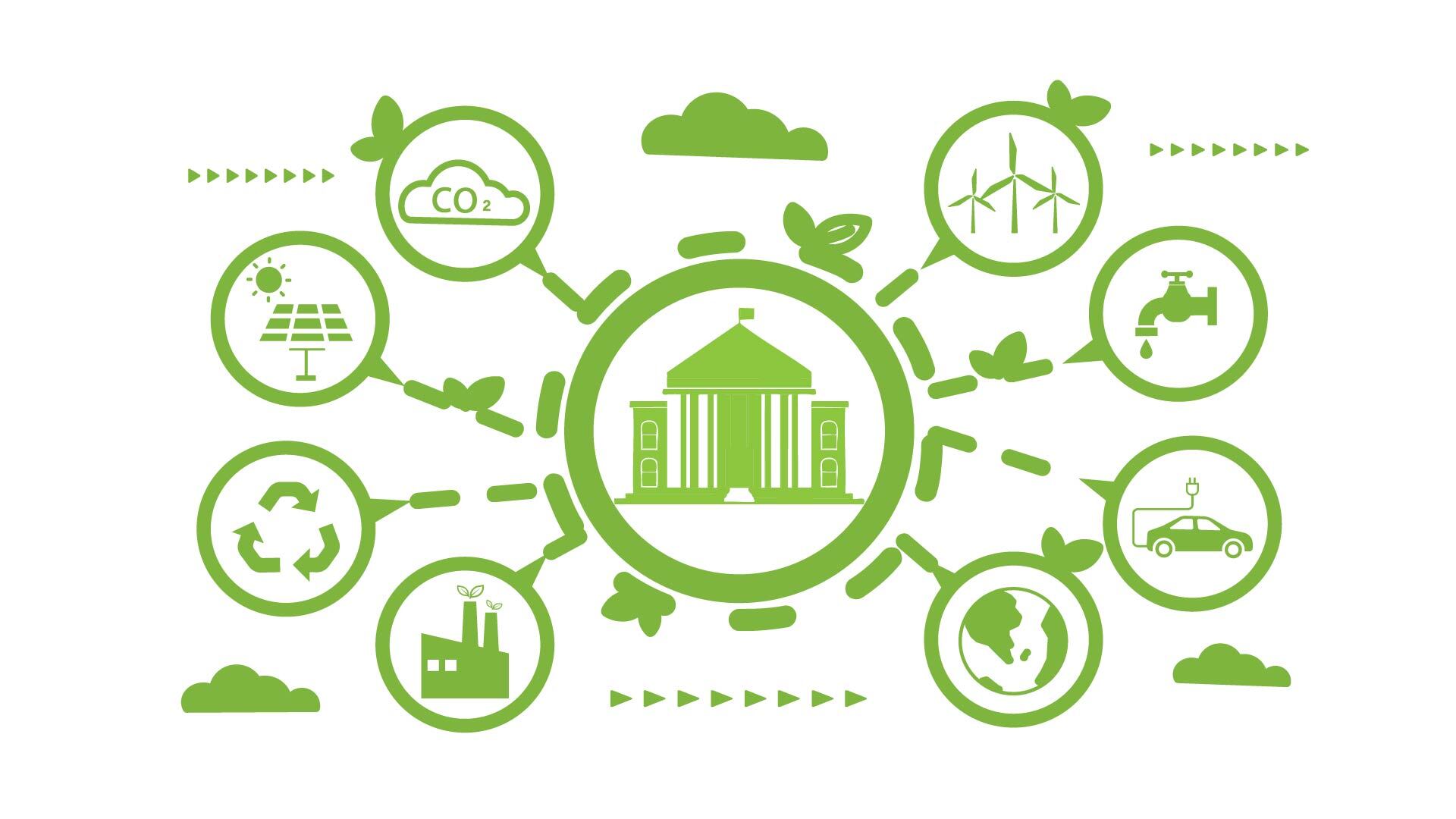Courthouses are evolving, and technology is at the heart of this transformation. These advancements are improving courthouse security and operations, promoting sustainability, and enhancing the experience for citizens navigating the justice system.
In smart courthouses, technology can significantly enhance the functionality and accessibility of public spaces, ensuring that they are more efficient, user-friendly, and secure. In this blog, we’ll explore the use of a range of technologies, including AI-driven tools, that we as courthouse planners are witnessing in the lobby and public spaces of courthouses. We’ll also take a look at how these technologies are improving the courthouse experience for all users.
Digital Wayfinding
A clear wayfinding system improves the user’s ability to navigate through the courthouse, reducing stress for visitors, jurors, and staff. Wayfinding also supports security and operational efficiency by guiding people to appropriate areas while minimizing congestion and unauthorized access.
We are seeing a growing number of courts nationwide providing signage in a digital format to guide users to appropriate spaces within the courthouse and enhance the user experience. Digital maps and navigation apps can be developed using AI, providing real-time, personalized information and guidance on the courthouse premises. Digital wayfinding can be provided on smartphones, information kiosks, or interactive touchscreens. In addition to directions, digital wayfinding can include real-time updates on court schedules, room changes, and wait times. Multilingual support and ADA-compliant interfaces can ensure an inclusive experience for all.
The image below shows an example of digital signage in a Midwest courthouse I recently visited. The signage was placed on the floor where jury assembly is located to help orient jurors to the space.
 Digital wayfinding
Digital wayfinding
Self-Service Check-In
Self-service check-in kiosks and mobile apps provide a convenient, efficient way for visitors to check in for court appearances, jury duty, and other court-related matters. These digital systems enable individuals to confirm their attendance, receive instructions, and access relevant information without needing direct interaction with court staff—reducing wait times and easing the burden on administrative personnel. The technology can also incorporate features such as facial recognition or QR code scanning for identity verification.
 Self-service check-in
Self-service check-in
Advanced Security Systems
Integrating surveillance cameras, access control, and emergency alert systems can promote security and safety in the courthouse lobby and public spaces. Cameras can be equipped with AI-powered facial recognition and behavioral analysis to provide enhanced video surveillance capabilities. Such tools can help identify unauthorized individuals, monitor crowd movements, and detect suspicious behavior in real time.
Acoustic gunshot detection comprised of sensors in ceilings or walls can detect and triangulate gunshots to pinpoint the location of gunfire. Some systems can integrate with CCTV to detect a firearm before it is discharged. Biometric fingerprint scanners can be installed at staff entrances. These systems can instantly lock down doors and alert security personnel to potential threats, enabling a swifter response.
Smart security scanners and metal detectors with faster processing and less manual checking are also emerging technologies. Mobile duress apps alert security teams or trigger silent alarms when staff feel threatened, allowing for a rapid response. RFID or Bluetooth badges track staff and visitor movement, which is useful for monitoring traffic patterns or locating individuals during emergencies.
 Biometric fingerprint scanner
Biometric fingerprint scanner
Environmental Controls
Environmental controls in courthouses play a crucial role in maintaining a comfortable and sustainable atmosphere for both staff and visitors while also reducing energy consumption and costs. Examples include smart lighting, HVAC, and energy systems that adapt to occupancy, weather conditions, and time of day. Sensor-driven systems can be used to automatically adjust ventilation, temperature, and humidity levels based on real-time data, ensuring a healthier and more comfortable environment in courthouse spaces. A growing number of courts are demonstrating a commitment to sustainability by deploying environmental control technology in courthouses.
 Smart lighting
Smart lighting
Where Do We Go From Here?
As courthouses evolve to support a more connected, accessible, and user-centered justice system, the transformation of lobbies and public spaces has become essential. These areas are no longer merely transitional zones—they are now digital touchpoints for information and critical components of courthouse security.
Looking ahead, the continued integration of smart signage, wayfinding apps, advanced security technologies, and intelligent environmental controls will reshape how the public navigates and experiences the justice system. The challenge—and opportunity—is to strike the right balance between security and accessibility, tradition and innovation. The path forward is to design courthouse spaces that don’t just facilitate justice, but embody it in every interaction.



.jpg)


.jpg)
.jpg)
.jpg)
.jpg)
.jpg)


.jpg)
.jpg)
-1.jpg)
.jpg)
.jpg)
.jpg)
.jpg)
.jpg)

